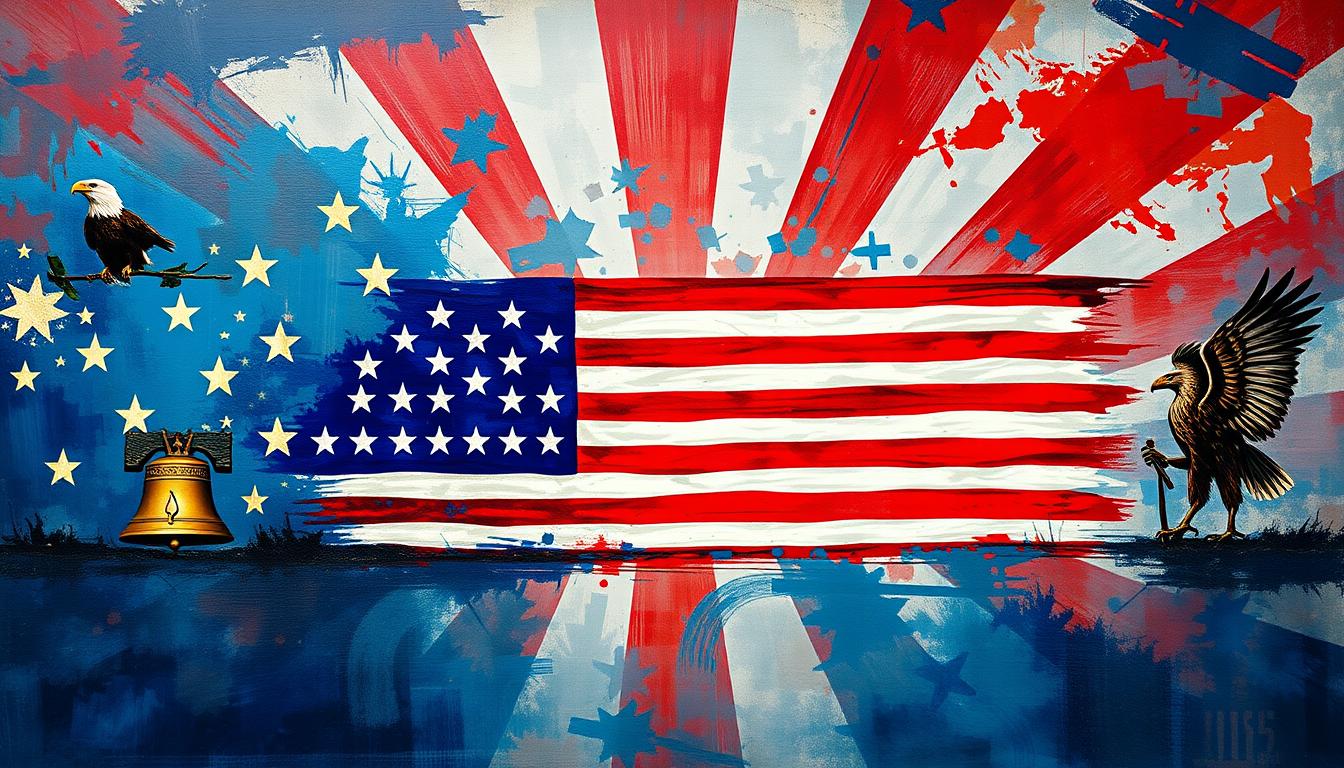13 Stars to 50: How the American Flag Became a Symbol of Unity and Freedom

The journey of the American Flag is a profound narrative that transforms a simple banner with 13 stars into an enduring symbol of unity and freedom. Dating back to the roots of the nation, the history of the American Flag showcases its evolution, mirroring the growth and changes within the United States. As we delve deeper into this compelling tale, we will uncover the layers of significance this flag holds in American culture, representing ideals that resonate through generations. This exploration sets the stage for understanding the milestones that contribute to the flag’s status as an emblem of hope and national pride.
The Origins of the American Flag
The history of the American Flag is rich and fascinating, reflecting the colonies' early desire for identity and unity. As conflicts with England grew, so did the need for symbols that represented the colonies' aspirations. Understanding the early flag designs that emerged during this time sheds light on the sentiments that fueled the quest for independence.
Early Designs and Their Significance
Prior to the official adoption of the first American Flag, numerous early flag designs appeared, each imbued with significant meaning. These flags often featured elements that represented independence or rebellion against British rule. Common motifs included:
- Stripes and stars symbolizing unity among the colonies
- Use of colors like red, white, and blue to evoke patriotism
- Imagery depicting local flora and fauna as a tribute to the land
These designs served not just as banners but as reflections of the colonies' resolve to stand together. Each flag encapsulated a message of resistance, merging the ideals of freedom and self-determination during a pivotal time in history.
The Continental Congress and the First Flag
In 1776, the Continental Congress played a decisive role in shaping what would become the first American Flag. This momentous occasion marked a significant step in the history of the American Flag. The Congress convened to discuss the creation of a national flag that would stand as a symbol of the newly formed nation. It is widely believed that Betsy Ross was commissioned to create this flag, leading to the familiar design we recognize today.
This foundational moment ignited a fervor for national identity, sending a clear signal that the colonies were united in their struggle. The first American Flag became a visual representation of aspirations for liberty and governance independent of British oversight.
The Historical Journey from 13 Stars to 50
The evolution of the flag serves as a captivating narrative, starting with the 13 original colonies. Each star in the first American Flag represented one of these colonies, symbolizing their unity and commitment to independence. The American Flag history reflects the growth of the nation and its values. Understanding the contributions of each colony provides insight into not only the early formation of the United States but also the deep-rooted significance of the flag itself.
Understanding the 13 Original Colonies
The 13 original colonies played a pivotal role in America's quest for independence. These colonies were:
- Delaware
- Pennsylvania
- New Jersey
- Georgia
- Connecticut
- Massachusetts
- Maryland
- South Carolina
- New Hampshire
- Virginia
- New York
- North Carolina
- Rhode Island
Each colony contributed uniquely to the creation of the United States. They sought freedom from British rule and rallied together to form a new nation. The symbolism carried by each star showcases their importance in American history and the shared values that unite them.
Adding New Stars: A Timeline of Changes
The American Flag has undergone several changes since its inception, primarily through the addition of stars. A flag stars timeline outlines how new states earned their representation:
| State | Date Added | Stars on the Flag |
|---|---|---|
| Vermont | 1791 | 14 |
| Kentucky | 1792 | 15 |
| Tennessee | 1796 | 16 |
| Ohio | 1803 | 17 |
| Louisiana | 1812 | 18 |
| Indiana | 1816 | 19 |
| Mississippi | 1817 | 20 |
| Illinois | 1818 | 21 |
| Alabama | 1819 | 22 |
| Maine | 1820 | 23 |
| Missouri | 1821 | 24 |
| Arkansas | 1836 | 25 |
| Michigan | 1837 | 26 |
| Florida | 1845 | 27 |
Each addition of a star signifies a new state's entrance into the Union, marking milestones in both American Flag history and the evolution of the flag itself. The flag has not only changed in appearance but has come to embody the spirit of liberty and collaboration across the nation.

13 Stars to 50: How the American Flag Became a Symbol of Unity and Freedom
The American flag encapsulates the essence of American ideals such as liberty, justice, and equality. Each element of its design represents a unique facet of the nation's character. Over the years, this flag has evolved into a powerful symbol of national unity, resonating deeply with citizens as they look to its history for inspiration.
The Flag as a Representation of American Ideals
From its inception, the American flag has served as a beacon of the values embedded in the nation’s founding documents. The Declaration of Independence laid the groundwork for these ideals, emphasizing the significance of freedom and personal rights. The flag's vibrant colors and stars reflect the spirit of resilience and unity among diverse populations, underscoring the commitment to uphold American ideals.
National Unity Through Flags: A Historical Overview
The history of the flag illustrates its pivotal role in moments of national importance. Throughout various historical contexts, flags have united citizens under a common cause. From the Revolutionary War to modern times, the flag has symbolized solidarity during crises, inspiring collective action among individuals. Each alteration to the flag, represented by the addition of stars, marks a moment of growth in the nation’s commitment to national unity.
| Year | Changes Made | Significance |
|---|---|---|
| 1777 | First official flag adopted | Established identity in the Revolutionary War |
| 1818 | 13 stripes & stars for each state | Reflected unity and growth of the nation |
| 1960 | 50 stars added for Hawaii | Symbolized complete union of states |
Key Historical Events That Shaped the Flag's Meaning
The American flag has served as more than just a piece of fabric throughout history. It symbolizes unity and freedom, especially during pivotal moments such as the American Civil War and both World Wars. These conflicts highlighted the role of the flag in rallying a nation, offering a visual representation of collective ideals and sacrifices made by countless individuals.
The American Civil War and the Flag's Role
During the American Civil War, the flag emerged as a powerful symbol for both Union and Confederate forces. Each side infused their banners with deep meaning, as they represented not only their cause but also the values they fought to preserve or overturn. Soldiers carried the flag into battle, often at great personal risk, believing that it embodied their commitment to their respective ideologies. Historic speeches and letters from the era reflect the deep emotional connection soldiers felt toward the flag:
"The flag is a reminder of the promises made to uphold the integrity of our Union, regardless of the cost."
World War I and II: Flags of Freedom
In the context of World War I and World War II, the American flag took on even greater significance. It became an emblem of freedom against tyranny, serving to unite a diverse population under a common goal. The flag's presence during military parades, iconic photographs, and significant events fostered a sense of pride and patriotism among citizens. Its enduring symbolism can be illustrated in the following table:
| Event | Year | Significance of the Flag |
|---|---|---|
| World War I Armistice | 1918 | The flag was flown in celebration, marking the end of conflict and the beginning of hope for peace. |
| Raising the Flag on Iwo Jima | 1945 | This iconic moment showcased the flag as a representation of victory and resilience, capturing the hearts of Americans. |
| Victory Day Celebrations | 1945 | The flag was prominent, reminding citizens of the sacrifices made for freedom and the collective triumph over oppression. |
The Flag in Popular Culture
The American Flag serves as a powerful symbol in various forms of popular culture. From art to literature and music to film, its representation often evokes a deep sense of patriotism and resilience. These portrayals transcend mere representation, intertwining with themes of identity and societal reflection.
The American Flag in Art and Literature
Throughout history, the American Flag has appeared prominently in artistic expressions. Renowned artists like Norman Rockwell have illustrated scenes embodying the flag's significance, showcasing American values and unity. The flag's portrayal in literature often highlights themes of struggle and hope, contributing to an understanding of flag symbolism in literature. Authors weave the flag into narratives that reveal the nation’s ideals and challenges, reinforcing its role as a cultural touchstone.
Symbolism in Music and Film
In music, the flag plays an integral part in patriotic songs, most notably in "The Star-Spangled Banner." This anthem encapsulates the spirit of resilience and national pride, underlining the flag's cultural impact. Film also depicts the American Flag as a recurring motif, often representing conflicts, victories, or moments of unity. Various filmmakers emphasize flag symbolism in music and on-screen representations, contributing to its persistent presence in American culture.
The Flag's Role in Protest and Social Movements
The American Flag has a profound history that encompasses both unity and dissent. Its presence emerges prominently in moments of social change, symbolizing various aspirations for justice and equality. The role of the flag in the Civil Rights Movement serves as a poignant example of how its imagery can be marshaled to advocate for meaningful change. This complex relationship between flag symbolism in activism and social movements highlights the ongoing struggles for rights and recognition.
Symbol of Resistance: Civil Rights Movement
During the Civil Rights Movement, the American Flag took on a dual significance. For many activists, it represented the nation's ideals of freedom and equality, while others viewed it as a symbol of oppression due to the systemic racism that persisted in American society. The use of the American Flag in protests during this era aimed to reclaim its symbolism for marginalized communities and showcase their demands for civil rights. Noteworthy demonstrations featured the flag prominently, underscoring the persistent fight for dignity and justice.
The Flag in Modern Activism
In contemporary social movements, the American Flag continues to be a focal point of both reverence and criticism. From Black Lives Matter protests to movements advocating for LGBTQ+ rights, the flag appears in various forms—often redesigned, reimagined, or utilized as a powerful backdrop for calls to action. This resurgence of the American Flag in protests illustrates how its symbolism transcends mere patriotism, embodying the aspirations for equity and justice that drive many social movements today.

Modern Interpretations of the American Flag
The American Flag serves as a powerful symbol that continues to evolve with time. Various modern flag interpretations reflect societal changes, as people assign new meanings based on personal experiences and cultural shifts. Flag representation today encompasses a wide range of sentiments, prompting discussions about national identity, unity, and diversity. Understanding these contemporary views is essential for grasping the ongoing significance of this iconic emblem.
The Flag's Representation in Today's Society
In contemporary society, the American Flag emerges as a canvas for various expressions of identity and values. It frequently appears in different contexts, showcasing its multifaceted nature. Key aspects of its representation include:
- Expressions of patriotism.
- Symbols of social justice movements.
- Visual elements in political discourse.
These aspects highlight how modern flag interpretations contribute to shaping public opinion and cultural narratives. As the flag becomes intertwined with diverse causes, its meaning continues to expand and transform.
Education and the Significance of the Flag Today
The educational significance of the flag plays a key role in fostering respect and understanding among younger generations. Schools and community programs actively engage in initiatives to teach the historical and cultural importance of the flag. These educational efforts aim to:
- Instill a sense of national pride.
- Promote civic responsibility.
- Encourage critical discussions about representation in society.
By integrating flag-related education into curricula, institutions empower students to grasp flag representation today and its relevance to ongoing national dialogues. This educational foundation not only respects the flag but also embraces the diverse interpretations that define contemporary America.
Conclusion: The Timeless Symbol of Unity and Freedom
The American Flag has undeniably evolved into a potent symbol of unity and freedom, representing the collective identity and values cherished by citizens throughout the nation. From its early designs reflecting the struggles of the original colonies, the flag has come to embody enduring significance through historical events and social movements. It stands as a testament to resilience, having weathered trials and triumphs alike, reinforcing its position as a beacon of hope and collective identity.
As society progresses, the interpretation of the American Flag continues to adapt, resonating with contemporary audiences while paying homage to its storied past. The flag's role in protests and civil rights movements further highlights its capacity to inspire change and foster discussions surrounding equality and justice. It is both a reminder of the sacrifices made for freedom and an invitation to engage in the ongoing dialogue about the essence of American ideals.
In this constantly changing landscape, the American Flag remains an iconic symbol of unity and freedom. Its lasting influence serves as a powerful reminder of the principles upon which the nation was built and its potential as a source of inspiration for generations to come. The flag's enduring significance lies not only in its visual representation but in the values it encapsulates, urging Americans to strive for a brighter future united under its colors.
